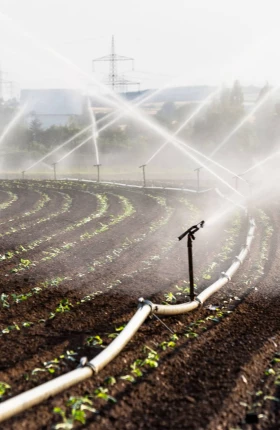Earth’s water is in increasingly short supply. By 2030, according to the UN, the global demand for this precious resource is expected to exceed supply by 40%. Yet water utilities around the world lose more than 126 billion cubic meters of water annually through leakage and consumption they don’t bill for. Put another way, the average water utility loses fully a third of its treated water every year.
While water loss and unpaid bills are problems every water utility faces, the challenge is especially great for utilities in emerging markets. A combination of low service quality, declining customer trust, and insufficient revenue generation often leads to a vicious cycle of eroding creditworthiness and the inability to secure the investments that utilities need to enhance their service levels.
Breaking this pattern is critical if these utilities are to reduce their financial losses, increase their efficiency, and gain the means to deliver sustainable, high-quality water to their communities. And according to one estimate, every dollar invested in improvements in the quality and availability of water provides at least $7 in societal and economic gains through improvements in health, energy, food security, and the environment.
Every dollar invested in improvements in the quality and availability of water provides at least $7 in societal and economic gains.
As a recent report frrom the Japan International Cooperation Agency and BCG makes clear, investments in the digitization of water utilities offer the potential to significantly increase their efficiency, uncovering leaks, optimizing distribution and consumption, improving billing and collections, and minimizing energy use. While digitization isn’t the entire solution, utilities that work to incorporate it into their daily operations can make real strides in providing the water needed for communities around the world to flourish.
The Digital Advantage
Globally, water utilities are unlocking tangible benefits from digitization across the entire value chain, from asset and investment management, production, distribution, collections, and customer support to various management and support functions. One South Asian utility, for example, cut its percentage of non-revenue water—the amount of water distributed that produces no earnings—by half in a decade. Similarly, an African utility increased collections by 28% and billing by 8% within two years.
The ripple effects of digitizing water utilities go beyond improving operational efficiency. Better water management can contribute to achieving several of the UN’s key Sustainable Development Goals, including good health and well-being, clean water and sanitation, sustainable cities and communities, gender equality, and others.
Getting Started
While digital transformation is a long-term journey, water utilities, regardless of their current level of digital maturity, can start capturing its benefits through focused, achievable initiatives while staying aligned with a clear and robust digital strategy.
As the report suggests, utilities should begin the journey with an in-depth analysis of their digital maturity and degree of capabilities in six key areas: digital strategy, digital engagement, digital business processes, data analytics and AI, digital infrastructure and security, and digital organization, talent, and ways of working.
Once this assessment has been completed, utilities should carry out the digital transformation in a carefully sequenced process:
- Identify capabilities gaps and initial initiatives.
- Prioritize and begin designing initiatives.
- Align stakeholders and mobilize funding.
- Implement and monitor initiatives and change management efforts.
- Evaluate progress against predefined KPIs and operational goals and provide feedback.
Implementing this change, however, is no easy task. The success rate of major digital transformation efforts across all industries is just 30%. Utilities can significantly improve their chances of success by adhering to six key factors:
- Develop an integrated digital strategy with clear transformation goals.
- Gain commitment from leaders at both the executive and operational levels.
- Deploy high-caliber talent.
- Generate an agile governance mindset that drives broader adoption.
- Monitor progress toward defined outcomes.
- Design and build on a modular and scalable digital architecture.
It is also important to begin the transformation journey by capturing quick wins that can be developed even at early stages of digital maturity. The goal is to gain confidence in the overall effort and generate confidence in the organization’s ability to maintain its momentum. For example, within six months, a South Asian utility that had relatively low digital maturity developed a meter-reading app and a tool to monitor non-revenue water, enabling it to identify around $450,000 in additional annual revenue and prevent losses of up to $2.5 million per year through higher billing accuracy and leakage detection.
Completing the Picture
Every stakeholder in water utility improvement efforts needs to remember that true digitization isn’t just a matter of putting new technologies in place. Utilities must also continue to invest in critical elements of their operations such as upgrading their physical infrastructure and improving customer metering rates—and they must strive at the same time to tackle broader challenges such as low tariff rates and the depletion of their water sources.
In short, the integration of advanced digital tools across the value chain should be seen as only a part—but a critical part—of the overall transformation of water utilities. Combined with strengthening governance frameworks and building digital capabilities within the workforce, it can significantly enhance a utility’s ability to deliver high-quality, scalable, and financially sustainable water services.
JICA is an agency of the Government of Japan which extends Official Development Assistance (ODA) in 150+ partner countries over six decades. JICA DXLab, in a partnership with BCG, is a flagship initiative of JICA that spearheads digital transformation in its ODA programs for accelerating the socioeconomic impacts to thrive in the digital age. One of the focuses of JICA DXLab is the development and deployment of Digital Public Infrastructure (DPI) and Digital Public Goods (DPGs). The unique approach of JICA DXLab is to leverage JICA’s ODA programs implemented across sectors and countries for wider and deeper adoption of DPI and DPGs in agile collaboration with governments, private sector, academia and civil societies.






